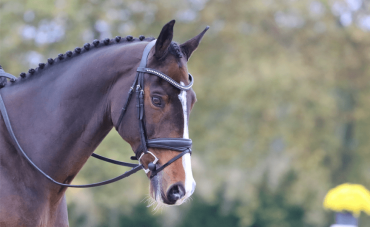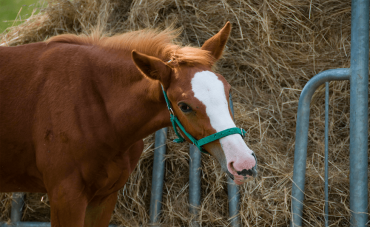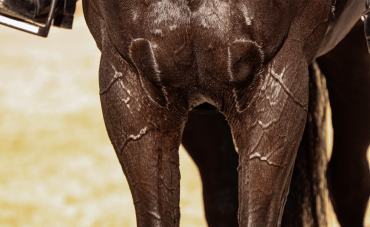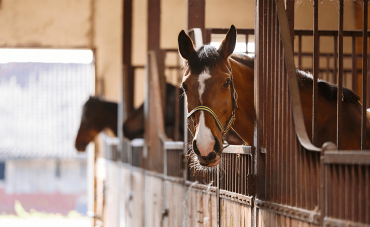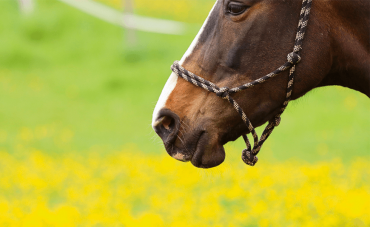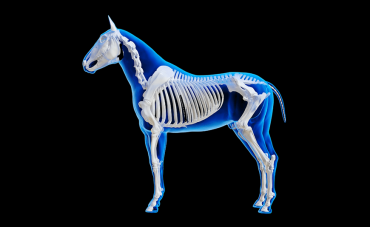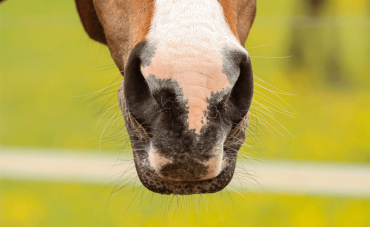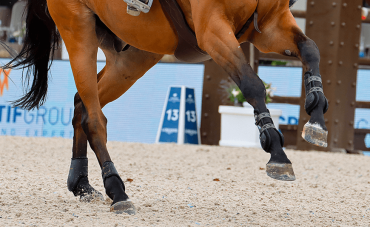Every rider is one day confronted to a horse that seems to get tired quickly, either because it is young, or because it comes out of a convalescence or simply because the work has been a little less important lately. We suggest you take a look at your horse's cardio-respiratory system and how you can train it to improve its performance.
Focus: your horse's cardiorespiratory system
As for any athlete, your horse's cardiorespiratory system will have its own characteristics that will have a direct impact on the training.
The heart, the "battery" of the cardiorespiratory system
The horse has a huge heart, which weighs nearly 4kg (in comparison the human heart weighs about 300g).
We discussed this topic more in details in our article on horse constants. The heart rate at rest is about 30 to 40 beats per minute and this rate can rise to 250 beats per minute during exercise. The increase in heart rate leads to an increase in cardiac output (multiplied by more than 10) which can reach 400 liters of blood pumped per minute.
All these elements make the horse an excellent athlete.
The lungs, the "Achilles' heel" of the cardiorespiratory system
Like the heart, the horse's lungs are very large, weighing about 7kg. However, they are the ones that will define the physiological limit of the horse's effort.
The respiratory rate of the horse at rest, the number of inhalations and exhalations (respiratory cycle) per minute, is 10 to 14 respiratory cycles per minute and can go up to 45 cycles per minute during a big effort.
This breathing frequency is also coupled with a very high ventilation capacity with 66L per minute at rest. Finally, the horse's lungs have the capacity to store about 50L of air.
What "handicaps" the horse at the respiratory level, is the "dead space", which means the volume of air that is not used for anything. This is the air contained in the nasal cavity and within the entire respiratory system (trachea, larynx...). For the horse, this so-called "useless" air represents 60% of the volume that he inhales. On the 66L that the horse inhales per minute, nearly 40L are therefore useless, which is enormous.
Principle of the work of the cardio-respiratory system of your horse
We said at the beginning of this article that we would explain how to train the cardiorespiratory system. Technically, it is only possible to work the cardiac apparatus because the respiratory capacities of your horse cannot be improved.
In fact, by working on your horse's "cardio”, you will improve the functioning of the entire cardiorespiratory system and he will probably be less out of breath, while his lungs will still function the same.
The two elements that will be worked on to obtain an improvement in the performance of the cardiorespiratory system are:
- The resistance to effort which is measurable by the heart rate. It corresponds to a lower heart rate for the same exercise. Unlike humans, it is not possible to increase the maximum heart rate of the horse.
- The aerobic capacity, which is measureable by the lactation rate. It corresponds to the decrease in the quantity of lactates (produced by the muscle during intense efforts) for the same exercise.
Exercises to improve your horse's cardio system
We have seen the elements that need to be improved to have a better performance of the cardiorespiratory system. We now suggest some exercises to work mainly on your horse's cardio system.
Long work at a moderate pace
When you do this kind of work with your horse, the idea is to keep him as relaxed as possible and in relatively slow gaits.
Always remember to relax at the beginning with at least 10 minutes of walk and a few minutes of trot. Don't ask too much from your horse, the idea is really to warm him up but think if you are in the arena to make variations in the layout (volteys, doubled...) which will allow the horse not to get "bored" going in circles. Towards the end of your relaxation you can add some exercises of mobilization of the hips or the shoulders to have your horse the most listening possible for the continuation.
For the rest of the session, it will be a question of doing phases of trot and gallop at fairly slow speeds. The duration of these phases depends on your horse, especially if it is the first time you do these exercises. With time, you can do between 5 and 10 minutes for each phase.
It is essential to give your horse time to rest between each phase so that it can recover. When you have done all your trotting and cantering phases, it will be important to help the horse recover, first at a slow trot and then at a walk, as relaxed as possible.
Work with unevenness
If you choose to work with your horse on an incline, try to find the longest possible ascent (or descent) to be able to work long enough on an incline. Be careful, to begin with, the incline doesn't have to be large!
As always, remember to warm up your horse before starting the work, making sure you are in control (especially if you are outside) and that your horse is as relaxed as possible.
As for the previous exercise, the objective will be to work on rather slow paces. Approach the hill at a slow trot and try to keep the pace as constant as possible throughout the exercise. Your horse's heart rate may increase significantly, this is normal.
However, if your horse seems to be breathing very fast and sweating a lot, it may not be in the right condition for the exercise. In this case you can do the exercise at a full walk or alternate between an active walk and a short trot.
Finally, finish with the recovery phase at a trot and then at a walk on flat ground.
The "never-ending" exercise
For this exercise, your horse's cardio-respiratory system will be put to the test but so will yours.
As before, start with your warm-up by walking with variations of the line and mobilization of the shoulders and hips.
Once your warm-up is done, you will do two sessions at a slow trot for 15-20 minutes without going back to the walk. Between each series, walk your horse for at least 5 minutes.
Once you have finished your last session, move on to the walk recovery.
Depending on your horse's training, you can increase the duration of each trot session or add more. This exercise can also be done at canter, in which case you should only do one "long session". You will probably start at 2 minutes of canter but can increase the duration of this session to 10 minutes.
That’s a wrap! Do not hesitate to discuss with your veterinarian who will be able to advise you other exercises that may be more adapted to your horse's profile.

